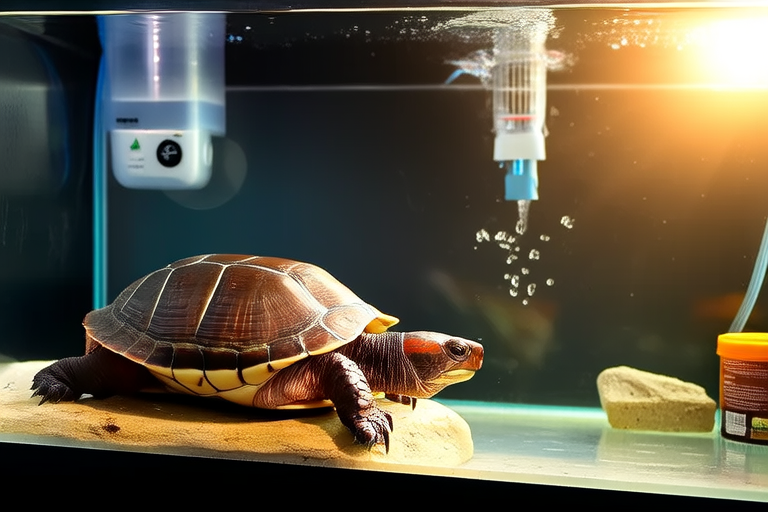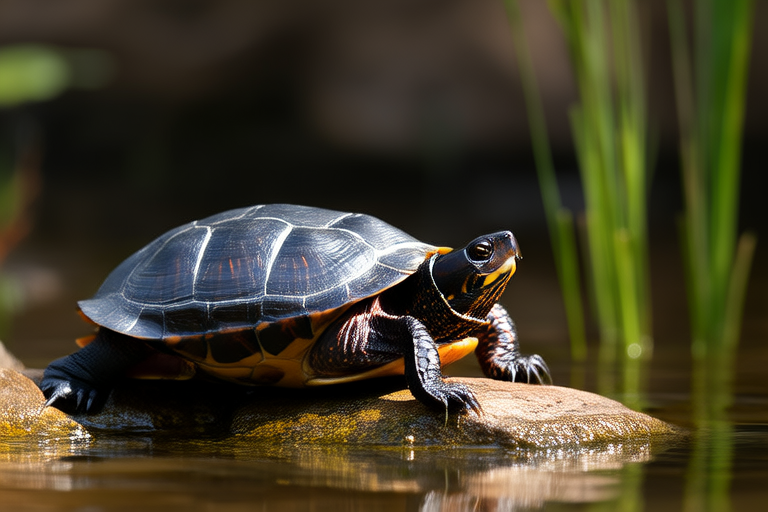
Red-eared Slider Care 101: Everything New Pet Parents Need to Know
Welcome to the wonderful world of red-eared slider turtles! As a new pet parent, you’re embarking on an exciting journey with these fascinating creatures. Red-eared sliders are popular pets because of their unique charm and relatively low maintenance. However, it’s crucial to understand that owning a red-eared slider comes with responsibilities. This guide aims to provide you with everything you need to know to ensure your turtle has a healthy and happy life.
Habitat Setup: Water and Basking Area Specifics
The first step in setting up your red-eared slider’s home is creating an environment that mimics its natural habitat as closely as possible. Turtles need both water and land areas to thrive.
- Water Area: Your turtle needs a spacious tank with clean, dechlorinated water. A general rule of thumb is one gallon of water per inch of shell length. For instance, a young turtle might require a 20-gallon tank, while an adult could need upwards of 55 gallons. Ensure the water is deep enough for swimming but not so deep that it poses a drowning risk. Equip the tank with a high-quality filter to maintain water quality.
- Basking Area: A basking spot is vital for your turtle’s health. It should be warm and dry, allowing your turtle to completely dry off. Use a platform that is large enough for your turtle to comfortably stretch out. Position a heat lamp above the basking area to provide warmth. The ideal temperature range for basking is between 85°F and 95°F (29°C to 35°C).
Diet Recommendations
Feeding your red-eared slider correctly is key to its health. A balanced diet should consist of commercial turtle pellets, fresh vegetables, and occasional protein sources.
- Turtle Pellets: These are formulated to meet the nutritional needs of aquatic turtles. Feed them daily, adjusting the amount based on your turtle’s size and appetite.
- Fresh Vegetables: Offer leafy greens like romaine lettuce, collard greens, and kale. Occasional treats can include carrots, squash, and bell peppers. Avoid iceberg lettuce as it lacks nutritional value.
- Protein Sources: Feed insects, earthworms, or commercially available turtle food occasionally. Limit protein intake to prevent obesity and related health issues.
Health Care Basics
Regular health checks and proper care are essential to keep your turtle healthy. Here are some basic guidelines:
- Veterinary Care: Find a veterinarian experienced with reptiles. Regular check-ups are important, especially for new turtles. They can help detect any potential health issues early.
- Shell Care: Keep your turtle’s shell clean by gently wiping it with a soft cloth and mild, turtle-safe soap. Avoid scrubbing too hard as this can damage the shell’s protective layer.
- Environmental Hygiene: Maintain a clean tank by regularly changing the water and cleaning the basking area. This helps prevent bacterial growth and keeps your turtle healthy.
Common Behaviors
Understanding your turtle’s behavior can help you better care for it. Here are some common behaviors you might observe:
- Basking: Your turtle will often spend time on its basking area, absorbing warmth and UVB light. This is normal and necessary for its well-being.
- Swimming: Turtles are naturally active swimmers. Watching them explore their aquatic environment is one of the joys of turtle ownership.
- Feeding: Turtles may show excitement when feeding times approach. They might swim towards you or become more active in anticipation.
Tips for Handling
Handling your turtle requires care and attention. Here are some tips to ensure both you and your turtle remain safe:
- Wash Your Hands: Always wash your hands before and after handling your turtle. This prevents the spread of bacteria.
- Support Properly: When holding your turtle, support its body fully, including its legs and tail. Avoid lifting it by its limbs or shell.
- Limit Handling: While it’s tempting to handle your turtle frequently, limit handling to avoid stressing it. Excessive handling can lead to stress-related illnesses.
Myths and Misconceptions
There are several myths and misconceptions surrounding red-eared slider care. Let’s address some of them:
- Myth: Red-eared sliders don’t require much space. Reality: Providing ample space is crucial for your turtle’s health and happiness. A cramped environment can lead to stress and health issues.
- Myth: Feeding your turtle bread or other human foods is fine. Reality: Bread lacks essential nutrients and can cause digestive issues. Stick to a balanced diet tailored to your turtle’s needs.
- Myth: Turtles hibernate indoors. Reality: Red-eared sliders are not true hibernators. They can enter a state of brumation during colder months, but this typically occurs outdoors in their natural habitat.
Conclusion
Owning a red-eared slider is a rewarding experience, but it requires commitment and knowledge. By understanding their habitat, dietary needs, health care, and common behaviors, you can provide a loving and nurturing environment for your turtle. Remember, preparation and ongoing education are key to responsible pet ownership. With the right care, your red-eared slider can live a long and fulfilling life. Happy turtle parenting!






